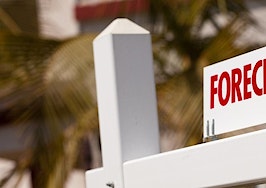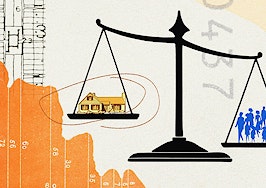- The U.S. median home price reached its 52nd consecutive month of growth in June.
- National median price is now at a historical peak of $231,000 – outpacing the previous highpoint in 2005, when it was $228,000, by 1 percent.
- Austin home price appreciation is up 12 percent from last year, while Houston is down by 2 percent.
Despite varying growth patterns across the nation, the U.S. median home price reached its 52nd consecutive month of growth in June, according to Attom Data Solutions’ June and Q2 home sales report.
The U.S. median home price was at a historical peak of $231,000, outpacing the previous highpoint in 2005, when it was $228,000.
“We’re in a booming real estate market once again, just like we were 10 years ago,” said Daren Blomquist, senior vice president at Attom (formerly RealtyTrac). “In many markets throughout the country, the fallout from the housing and foreclosure crisis has been repaired.”

Almost half of all metros (63 out of 130) surveyed in June were at their individual price peaks since the market bottomed out in 2012, the report says.
“Homeowners have regained their equity, and buyers can expect their homes to appreciate in value,” Blomquist said.
A closer look at home prices
Among the metro areas with the largest annual appreciation was Austin, which saw its median home price go up 12 percent from last year, according to the report. On the other side, median home prices declined from a year ago in Houston by 2 percent.
“Houston doesn’t have as much of a bubble, so they aren’t that far off from the previous peak,” Blomquist said. “But new economic issues are causing home prices to stagnant, or even go down.”
One example of a market not recovering as well is Stockton, California. Despite some upward movement, the local market was still 32 percent below its previous peak. Blomquist says that given the local economy and the distance Stockton is from many jobs in the Bay Area, this isn’t surprising.
“Some markets are not as highly desirable, so they’ve taken longer to recover. They tend to be in outlying areas, further away from jobs,” he said.
Alternatively, counties with accelerating annual appreciation include Kings County (Brooklyn), and Travis County (Austin).
Still hot in California
Despite the Bay Area and many coastal markets softening a bit for buyers as of recent, Attom says San Francisco home sellers in June sold their homes for an average of 72 percent more than what they originally paid for. Los Angeles sellers saw an average price gain of 50 percent last month.
U.S. homesellers in June sold for an average $41,000 higher than original purchase price — 22 percent more than they paid, which is the highest average price gain for home sellers since Sept. 2007.
Where is appreciation pulling back?
Although the pace of appreciation is slowing in some big markets across the U.S., they leveled off to more realistic growth patterns in June, according to Attom.
Los Angeles County home price appreciation was at 7 percent annually in June, compared to last year’s growth of 9 percent year-over-year. In 2013, L.A. home prices were up 31 percent year-over-year.
Blomquist says those markets are experiencing healthy trends.
“Home price appreciation is slowing, not going negative. It doesn’t seem to be caused by any substantial weakening in the economy. Those markets seem to be coming back down to earth,” he said.
Harris County (Houston), Miami-Dade County and Queens County (NYC) yearly price appreciation also slowed. Overall, annual home price appreciation slowed in 189 of 349 counties, or 54 percent of all market surveyed.
Distressed sales high in Baltimore, Chicago
Baltimore and Chicago held high shares of distressed properties, at 24.3 percent and 23.8 percent, respectively. Despite some markets struggling more, distressed sales (bank-owned, in-foreclosure and short sales) were down to 14.8 percent of all single-family and condo sales in the second quarter.

In June, distressed sales were at their lowest levels since the third quarter of 2007.
Blomquist says while it’s still an unfortunate side of the housing market, it can be beneficial to new buyers – like millennials – entering the market with less to invest.
“From a macro market perspective, those that still have foreclosures, like Boston, Chicago and Baltimore, are opportunities for buyers,” he said.
Cash sales and foreign investments
Although at their lowest levels since 2007 nationwide, cash buyers still played a sizable role in both Miami and New York City, Attom says, with almost 50 percent and over 40 percent shares of cash buyers, respectively.

However, both metros are feeling the same declining trend in cash buyers as the rest of the country. Miami was close to 56 percent just last year, and New York is down from 43 percent in 2015.













